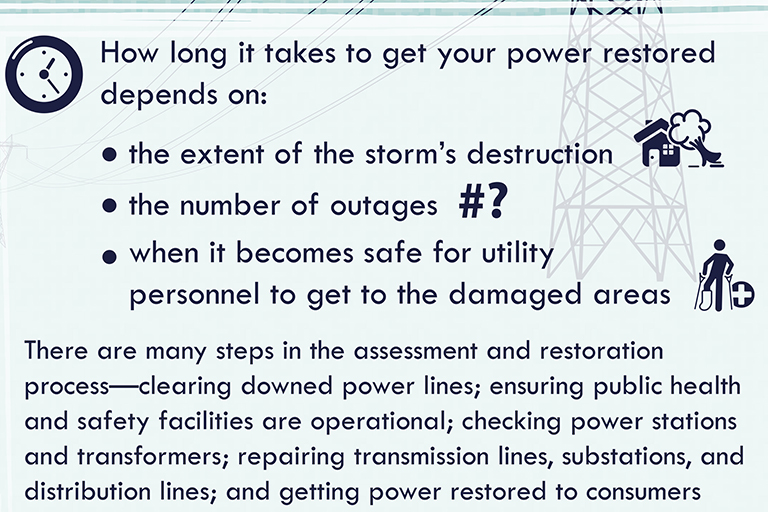While your utility does everything it can to reduce the possibility of outages to your home or business, they do occur, especially in March as the last vestiges of winter remind us that it is not gone. Its ice and snow can take down lines just as easily as vehicles sliding out of control on icy roads.
Whatever the reason, you can rest assured that your electric co-op is working as fast as it can to get your power restored quickly and safely.
The number one focus of your co-op is public safety. This means crews will clear lines and equipment that could pose safety hazards to the public first. Next, lineworkers will turn their attention to transmission line and substation equipment repairs that feed several parts of the system and must be operational to send electricity to the local distribution lines. Then, crews will focus on those distribution lines that can serve the most members, including tap lines that provide power to 20 to 30 homes or businesses. Finally, the crews will finish with the connections to individual members, working until every member has their electricity.
During this process, co-ops will generally first make repairs to facilities that are critical to public health and safety — like hospitals, police and fire stations, water treatment plants and communication systems. How long it takes to get your power restored depends on the extent of the storm’s destruction, the number of outages and when it becomes safe for utility personnel to get to the damaged areas.
Whether an outage is long or short, it pays to know what to do when the power goes out. You want to keep your family safe and weather the storm.
For more information, visit SafeElectricity.org,

